Following van Gogh
in Auvers-sur-Oise
by Sheramy Bundrick
Author of the historical novel Sunflowers
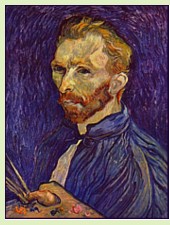
Step off the train at the Auvers-sur-Oise station, and you may wonder whether you’re in 2009 or 1889. A village about twenty miles northwest of Paris, Auvers-sur-Oise hosted many a painter in the late nineteenth century — among them Cézanne, Pissarro, and Daubigny — but is most famous to history as the place where Vincent van Gogh spent his last seventy days and where he is buried. In the wheatfields of Auvers, Vincent painted some of his most beautiful canvases, and in one of those same wheatfields, he shot himself in the abdomen at dusk on 27 July 1890. He breathed his last in a small attic room of the inn known as the Auberge Ravoux; he sleeps beside his brother Theo in a hilltop cemetery, under a blanket of ivy and discreet offerings from latter-day admirers.
Today, Auvers-sur-Oise maintains an unspoiled, decidedly untouristy air, despite the van Gogh lovers who flock there each year. I learned from talking to the locals that this is a concerted effort on their part: they don’t want Auvers to become an art history Disneyland. You won’t find tacky van Gogh souvenirs here — instead you’ll find affection and respect for the town’s most famous resident, folks calling him “Vincent” like he’s the neighbor up the street. True, there is a van Gogh trail to follow with signs and posters marking the places he painted, but sensationalism is carefully avoided.
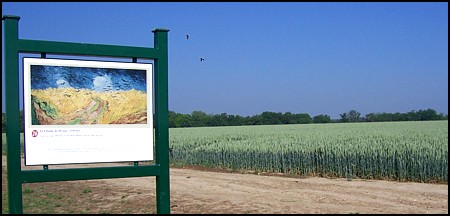
The Auvers tourist office is the best place to start: the friendly staff sells books and postcards, and has maps on hand to help a visitor plan his or her day. I like to continue my own visits up the hill at the village church; Vincent never worshiped here, but he painted its exterior, and you can see his picture at the Musée d’Orsay back in Paris. A short climb further up the plateau takes you into the heart of the wheatfields and to the crossroads famously depicted by van Gogh in Crows Over the Wheatfield (Van Gogh Museum, Amsterdam). Even the hum of airplanes can’t disturb the beauty
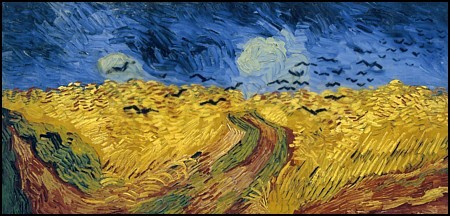
and tranquillity of the fields — all three of my trips to Auvers have been in May, when the wheat was young and green, and red poppies peppered the landscape. If you are lucky, you have the fields to yourself, with only the clouds and crows to keep you company.
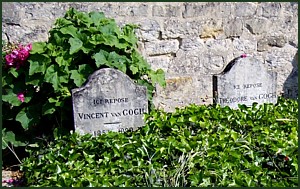 The cemetery is visible from the crossroads, and once inside, Vincent and Theo’s graves are easy to find, nestled as they are against a side wall. It is difficult not to be moved at the thought of their too-short lives — Theo died a mere six months after his brother — but at the same time, there’s something so serene about this place, one cannot help but feel they are at peace. In fact, walking the paths and fields of Auvers-sur-Oise, it is easy to imagine that Vincent is standing right behind you, that you might turn any second to see him hard at work, squinting at his easel, fingers plastered with paint.
The cemetery is visible from the crossroads, and once inside, Vincent and Theo’s graves are easy to find, nestled as they are against a side wall. It is difficult not to be moved at the thought of their too-short lives — Theo died a mere six months after his brother — but at the same time, there’s something so serene about this place, one cannot help but feel they are at peace. In fact, walking the paths and fields of Auvers-sur-Oise, it is easy to imagine that Vincent is standing right behind you, that you might turn any second to see him hard at work, squinting at his easel, fingers plastered with paint.
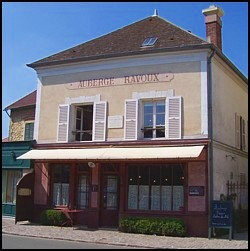
A walk back to the village’s main square (look for the city hall, the subject of a Bastille Day painting by Vincent) brings you to the Auberge Ravoux, lovingly restored by owner Dominique-Charles Janssens. Here you can visit Vincent’s lonely attic room, never occupied again after his death because he was a suicide. The room is deliberately kept empty, although if Monsieur Janssens has his way, someday an original van Gogh canvas will hang here in the artist’s honor. The room next door, occupied by Dutch painter Anton Hirschig during Vincent’s stay, is restored to match nineteenth-century décor, and the third attic room has been made into a mini-auditorium, where visitors watch a brief slide-show of Vincent’s Auvers artwork.

The restaurant downstairs serves lunch and afternoon tea and is itself worth a visit. You have never really had mousse au chocolat until you’ve tried the Auberge Ravoux’s dessert specialty, and anything you order is going to be made from fresh, organic ingredients. The cuisine harkens back to nineteenth-century favorites, and the dining room captures the look of the period.
A westward walk from the Auberge Ravoux leads you toward the Château de Léry, which van Gogh painted only once, and which today houses a multimedia display dedicated to the era of the Impressionists. I confess, I have never visited this exhibit, although it gets positive reviews in the guidebooks. Instead, I opt for Doctor Gachet’s house, which like the Auberge Ravoux has been recently restored. Paul Gachet, an art collector and amateur painter, was Vincent’s last physician. Visitors can admire his
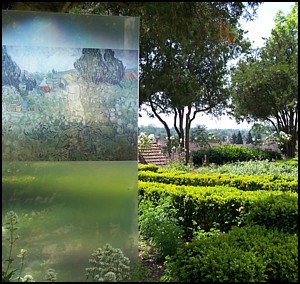 resurrected herbal and flower gardens, and inside the house, some of the Gachet family’s possessions. Vincent spent a great deal of time here, painting the garden as well as portraits of the doctor and his daughter, Marguerite. Part of the Gachet collection — which included not only van Gogh canvases but important works by other painters — was sold after the doctor’s death by his children, but a good portion of it hangs in the Musée d’Orsay.
resurrected herbal and flower gardens, and inside the house, some of the Gachet family’s possessions. Vincent spent a great deal of time here, painting the garden as well as portraits of the doctor and his daughter, Marguerite. Part of the Gachet collection — which included not only van Gogh canvases but important works by other painters — was sold after the doctor’s death by his children, but a good portion of it hangs in the Musée d’Orsay.
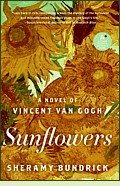
There is quite enough in Auvers-sur-Oise to occupy a full day’s visit. My first trip was in May 2006, under a gray sky threatening rain, and I can honestly say that my life was forever changed. I had always been a fan of van Gogh’s work, so like many others I traveled there as a pilgrim...but I did not expect an inspiration to write, with my novel Sunflowers as the eventual result. Something about that day, being alone in the wheatfields and at Vincent’s grave, spoke to me — whispered, really, one of those nagging whispers that urges you to give something new a try. I did try, and when I returned to Auvers to stand once more before Vincent and Theo, I said thank you.
Sheramy Bundrick is the author of Sunflowers, a love story about Vincent van Gogh. Visit her website at www.SheramyBundrick.com and her blog at VanGoghsChair.blogspot.com.
Back to Top
Back to Directory of Articles
©2009 Sheramy Bundrick
Enjoy this page? Please pay it forward. Here's how...
Would you prefer to share this page with others by linking to it?
- Click on the HTML link code below.
- Copy and paste it, adding a note of your own, into your blog, a Web page, forums, a blog comment, your Facebook account, or anywhere that someone would find this page valuable.